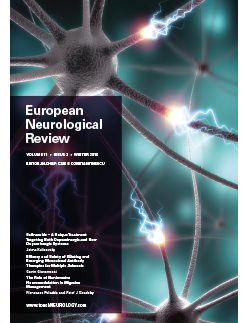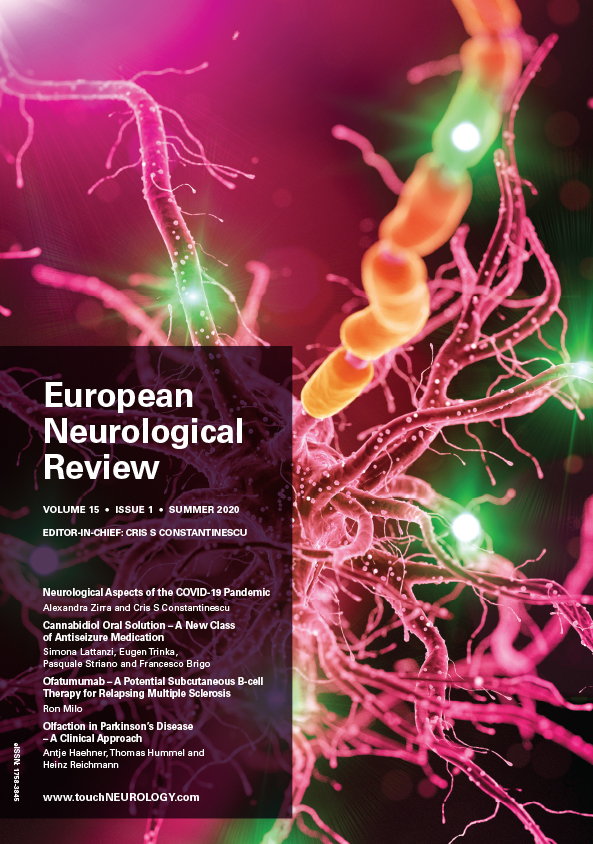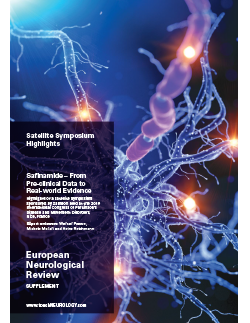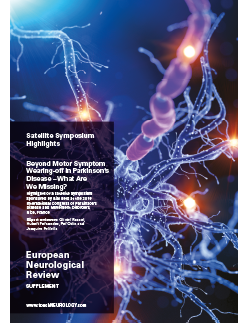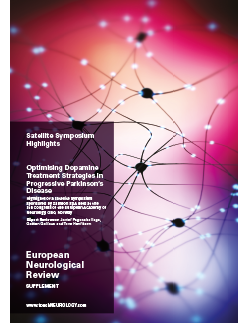EUROPEAN NEUROLOGICAL REVIEW – VOLUME 11 ISSUE 2 – WINTER 2016
Welcome to the winter edition of European Neurological Review. This edition features timely review articles and special reports, written by esteemed experts, examining a wide range of important topics.
We begin by introducing our new Editor-in-Chief, Cris Constantinescu, whose knowledge and expertise will be of great benefit to this journal and we are looking forward to working with him. The articles that follow address a variety of important topics, including spastic paresis, Parkinson ’s disease, multiple sclerosis and migraine.
Please peruse and enjoy the expert content and we welcome your feedback.
Welcome to the latest edition of European Neurological Review, which features a wide range of topical articles covering several areas of neurology. We would like to begin by introducing our new Editor-in-Chief, Cris Constantinescu, whose knowledge and expertise will be of great benefit to this journal. We wish him every success in his new role. […]
I am delighted to take on the role of Editor-in-Chief for European Neurological Review and would like to introduce myself. I studied medicine in Boston University, US, and specialised in neurology in Philadelphia. I then moved to Europe and worked on multiple sclerosis (MS) in Switzerland for two years. For the past 17 years, I […]
Special Reports
Spastic paresis may be caused by a variety of conditions, including stroke, spinal cord injury, multiple sclerosis, retroviral and other infectious spinal cord disorders, cerebral palsy, traumatic brain injury and hereditary spastic paraplegia.1 The exact prevalence of spastic paresis (in which spasticity is the most commonly recognised manifestation) is not known. However, it is estimated […]
Patients with spastic paresis often endure prolonged treatment regimens, where each journey is patient-specific and often difficult. Spasticity – defined as increased, involuntary, velocity-dependent muscle tone that causes resistance to movement – is a complex condition that often causes pain, contractures and impairment of basic self-care activities of daily living, such as eating, dressing and […]
Reviews
The options available for treating multiple sclerosis (MS) have increased substantially over the last two decades. Initial first-line disease-modifying therapies (DMTs), included intramuscular (IM) interferon (IFN) β-1a (Avonex®, Biogen, Cambridge, Massachusetts, US), subcutaneous (SC) IFN β-1a (Rebif®, EMD Serono, Rockland, Massachusetts, US), SC IFN β-1b (Betaferon®, Bayer, Leverkusen, Germany; Extavia®, Novartis, Basel, Switzerland [2007]) and […]
Parkinson’s disease (PD) is a progressive neurodegenerative disorder, with a prevalence that increases with age: 41 in 100,000 in the age group 40–49, rising to 1,903 in 100,000 in those aged over 80 years.1 PD is characterised by striatal dopamine deficiency resulting from progressive degeneration of dopaminergic cells in the pars compacta of the substantia […]
Migraine is the sixth most common form of disability globally that affects young, otherwise healthy subjects at the peak of their productive years.1 The management of chronic or refractory migraine with traditional pharmacological approaches can often prove challenging and unsatisfactory. In recent years, migraine therapy has witnessed rapid advance of techniques that offer a valid […]
The term ‘neurogenic bowel’ encompasses the manifestations of bowel dysfunction resulting from sensory and/or motor disturbances1 due to central neurological disease or damage. Neurogenic bowel dysfunction (NBD) is a particularly common occurrence in patients with spinal cord injury (SCI), spina bifida and multiple sclerosis (MS) and has been found to worsen progressively in these conditions.2–4 […]
US Neurology Highlights
For people living with multiple sclerosis (MS) to feel well and function optimally, we must embrace a comprehensive approach that integrates neurologic and primary care, psychosocial support and wellness strategies from disease onset, as well as specialty care as needed throughout the disease course. For families affected by MS to thrive and be well, adequate […]
Chronic pain affects millions of people around the globe. Current consensus considers chronic pain as a disease that arises from maladaptive changes within the central nervous system. Chronic pain poses a huge impact on affected individuals, societies, and health care systems. Current available medications or other treatment strategies are still far from providing an optimal, […]
Currently there is a tremendous amount of research interest in acute reperfusion therapy for patients suffering from acute ischemic stroke. However, other aspects of patient care in acute and subacute stroke are typically considered routine and thus have received less attention. The present guidelines emphasize medical management during the first 24–48 hours after infarction, but […]

Trending Topic
The prevalence of unruptured intracranial aneurysms (IAs) is approximately 3% of the population, with incidence on the rise due to the increased utilization of neuro-imaging for diverse objectives.1,2 The average risk of rupture for unruptured IA is estimated to vary from 0.3% to exceeding 15% per 5 years.3 Ruptured IA is the primary aetiology of […]
Journal Archive
European Neurological Review is a peer-reviewed, free-to-access, bi-annual neurology journal comprising review articles, case reports, practice guides, theoretical discussions, and original research. It features balanced and comprehensive articles written by leading authorities, addressing the most important and salient developments in the field of neurology in practical terms.
Latest articles videos and clinical updates - straight to your inbox
Log into your Touch Account
Earn and track your CME credits on the go, save articles for later, and follow the latest congress coverage.
Register now for FREE Access
Register for free to hear about the latest expert-led education, peer-reviewed articles, conference highlights, and innovative CME activities.
Sign up with an Email
Or use a Social Account.
This Functionality is for
Members Only
Explore the latest in medical education and stay current in your field. Create a free account to track your learning.


